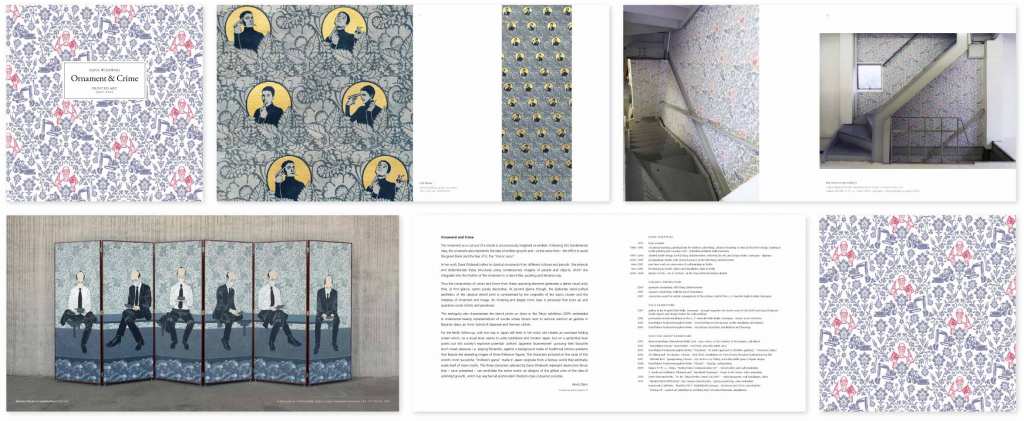Ornament & Crime
Printed Art 2007–2011 · Catalog · Berlin 2011
English/German · 44 pages · Bruno Dorn Verlag · ISBN 978-3-942311-83-0
Review by Anna Stern
download catalog »Ornament & Crime« (PDF, 7,3 MB)
Ornament and CRIME
The ornament as a cut-out of a whole is unconsciously imagined as endless. Following this fundamental idea, the ornament also represents the idea of endless growth and – at the same time – the effort to avoid the great blank and the fear of it, the «horror vacui».
In her work Dana Widawski refers to classical ornaments from different cultures and periods. She extends and defamiliarizes these structures using contemporary imagery of people and objects, which she integrates into the rhythm of the ornament in a stencil-like, puzzling and iterative way
Thus the composition of colors and forms from these opposing elements generates a dense visual unity that, at first glance, seems purely decorative. At second glance though, the elaborate hand-crafted aesthetics of the classical stencil print is contradicted by the originality of the topics chosen and the interplay of ornament and image. An irritating and deeply ironic layer is perceived that picks up and questions social clichés and paradoxes.
This ambiguity also characterizes the stencil prints on show in the Tokyo exhibition 2009: embedded in ornamental beauty representations of suicide where shown next to samurai warriors an geishas in Bavarian dress, an ironic hybrid of Japanese and German clichés.
For the Berlin follow-up, with her stay in Japan still fresh in her mind, she creates an oversized folding screen which, on a visual level, seems to unite traditional and modern Japan, but on a symbolical level points out this society’s explosive potential: uniform Japanese ‘businessmen’ pursuing their favourite lunch break pleasure, i.e. playing Nintendo, against a background made of traditional kimono-patterns that feature the repeating images of three Pokemon figures. The characters pictured on the cards of this world’s most successful “children’s game” made in Japan originate from a fantasy world that arbitrarily avails itself of Asian myths. The three characters selected by Dana Widawski represent destructive forces that – once unleashed – can annihilate the entire world: an allegory of the global crisis of the idea of unlimited growth, which has reached all postmodern Western-style consumer societies.
Anna Stern
Münster 2011
translated by Martin Wipperfürth
